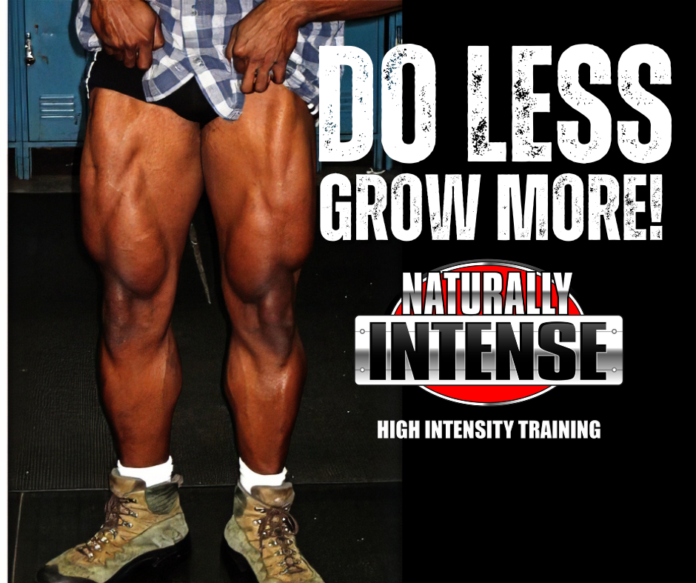Watch Building MASSIVE LEGS with High Intensity Training HERE!
So when I first started training, I had painfully skinny legs. I was 125 pounds at six feet tall, and the going joke was I could never apply for a loan when I got older because I had no visible means of support.Yeah, pretty funny looking back, but it wasn’t funny back then.

But I was able to transform my legs and my entire body, going from 125 pounds to becoming a successful natural bodybuilding champion, really building my legs to a point where my legs actually were a strong point, which is extremely difficult for someone who’s a natural bodybuilder and six feet tall. And I did it in a very unconventional way.
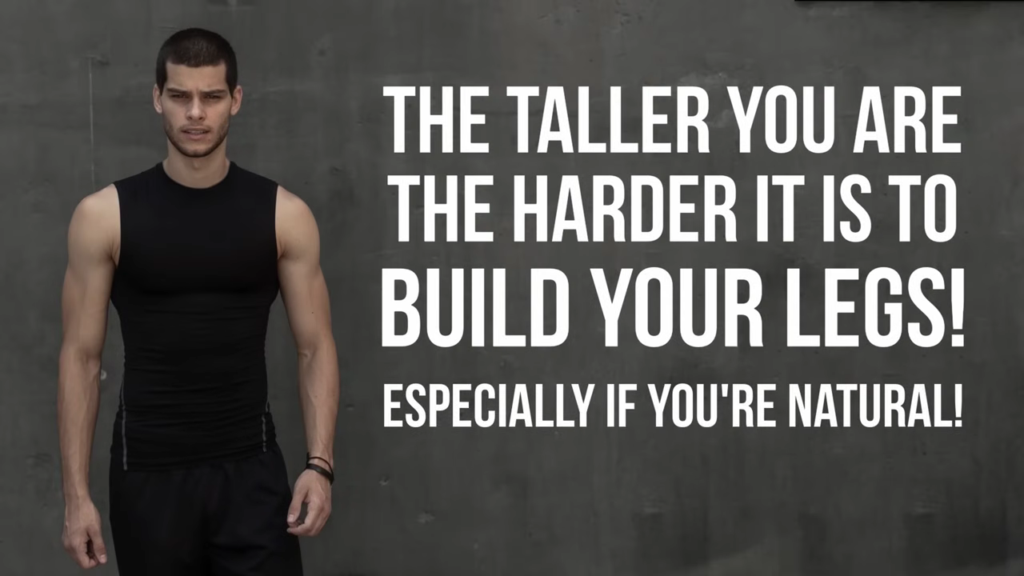
You see, I trained with what we call Naturally Intense High Intensity Training, a system of
extremely blisteringly intense workouts that last only 10 to 15, max 20 minutes, and it’s done only three times a week. So, my leg workouts, honestly, were generally only lasting 10 to 15 minutes at the period of time when I had my maximum growth. And I’ve been training that way now for the past 30 plus years, and my legs look like this at 50 years old.
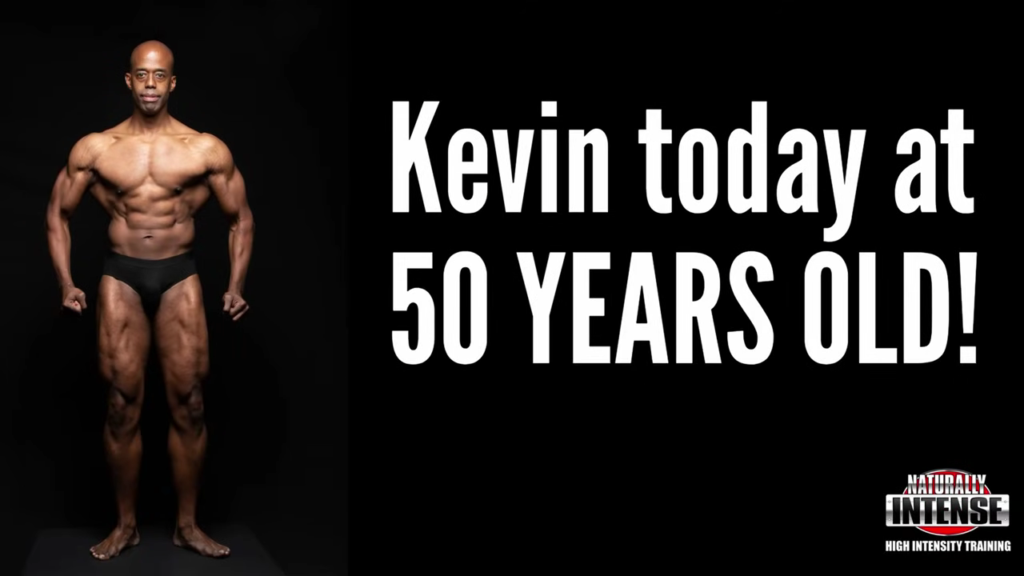
And perhaps even more important is the fact that I don’t have any knee pain, I don’t have any injuries, and I’ve trained hundreds of men and women with this particular form of training, and it’s proven itself time and time again, with everyone from natural bodybuilders to elite athletes to be an exceptional system for building your legs.
The Reality of Leg Training For Hardgainers and Natural Bodybuilders
Now, the idea of a leg workout lasting 10 to 15 minutes may sound completely different from what you’re used to hearing, but here’s the thing. Most of the information out there comes from individuals who are using drugs.
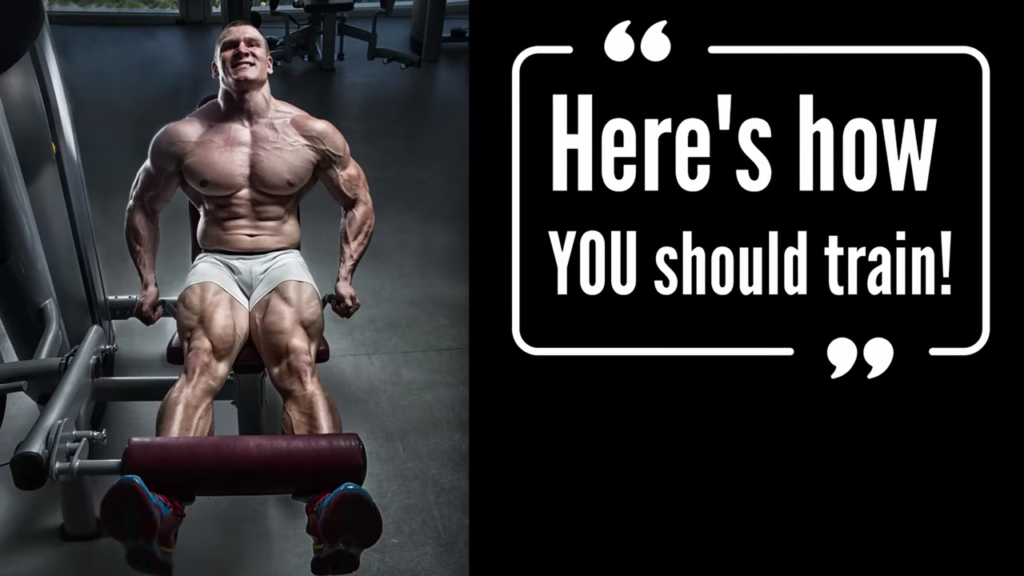
Most fitness influencers and bodybuilders, who are the ones who are talking about how you should be training, tend to be individuals on drugs. And then somehow, they expect that their particular training methods are going to work for natural athletes, and they don’t.
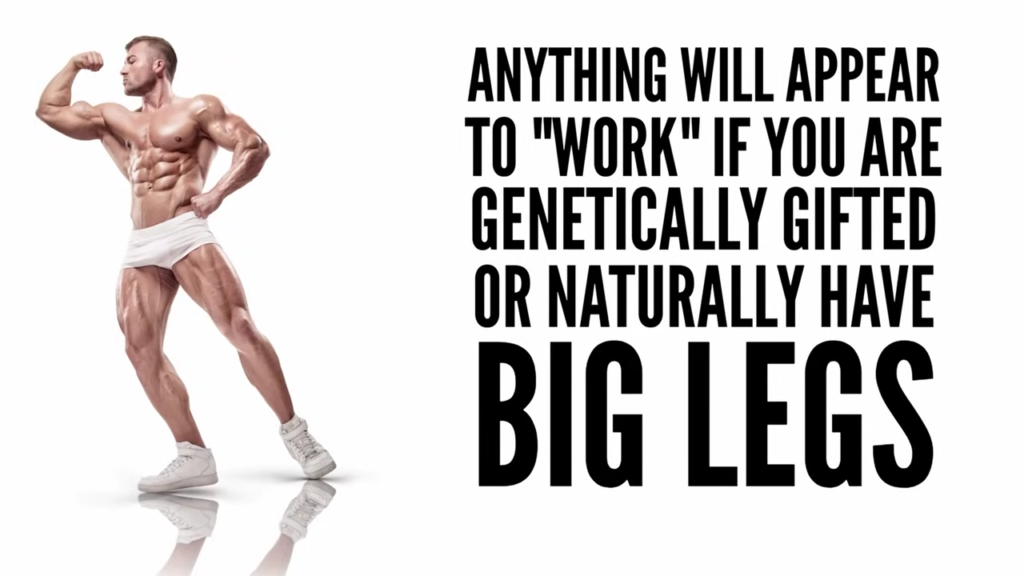
The fact that so many people are frustrated by all the years of progressive resistance training and high-volume training methods that will appear to work for those who are naturally genetically gifted, if they’re not using drugs, but one of the most important aspects for your success is always taking advice from individuals who did not start off with fantastic genetics. This system is completely different as it is designed from the bottom up for the average individual with average genetics to help them increase their leg size.
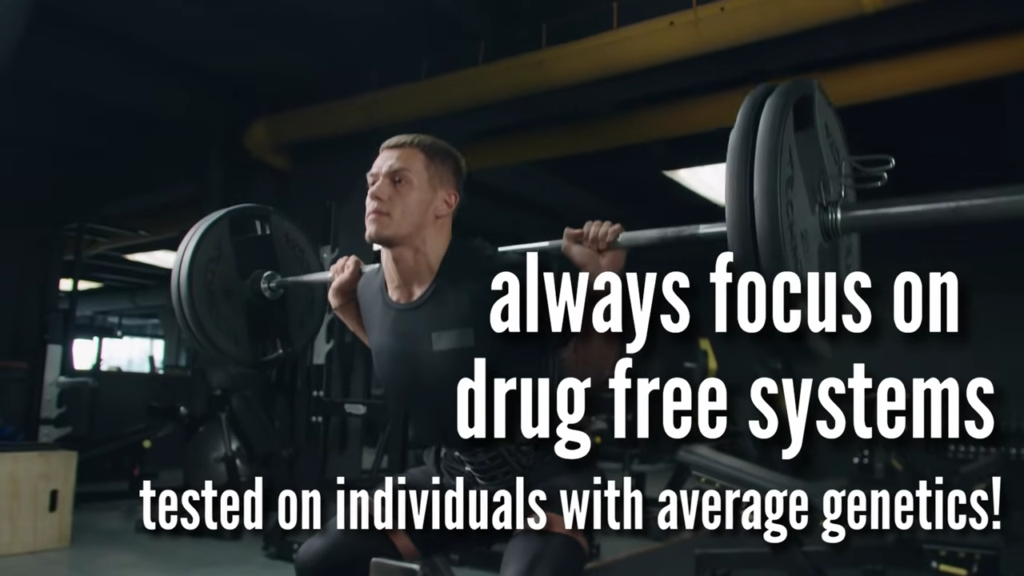
So stay tuned as I share my three decades plus of leg training experience with you to help you get better leg development in less time. And wait till the end as I have a special surprise download just for you. Now, bear in mind that Naturally Intense High Intensity Training leg workouts are exceptionally difficult, brutally intense, and extremely hard. So much so that for the first couple of years of my training, I threw up almost every single time I trained legs. Not that you have to throw up every time you train legs, but it gives you an idea of the type of intensity that we’re talking about here.
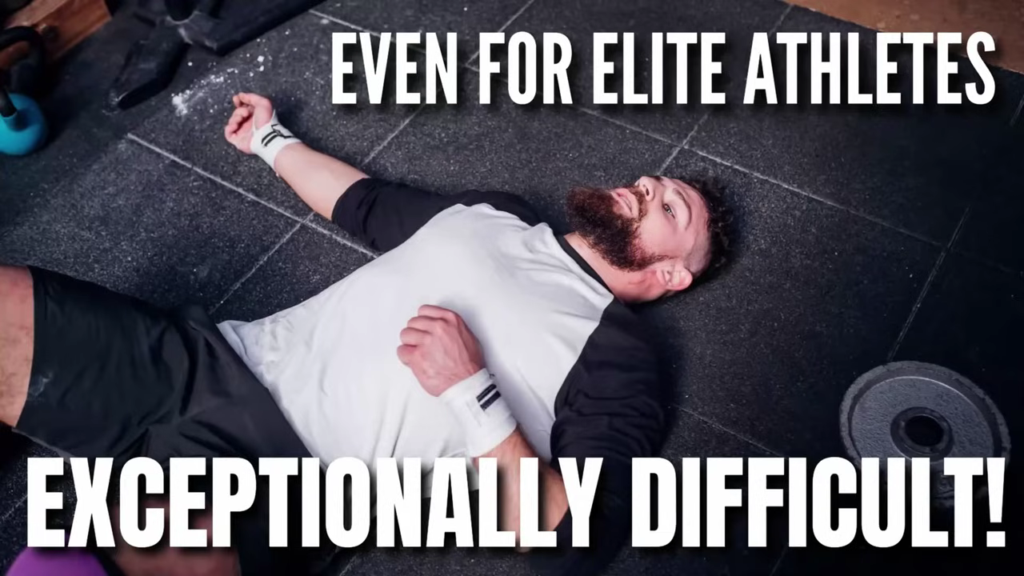
And bear in mind that leg workouts that don’t involve high intensity training techniques by
themselves are exceptionally difficult because the leg muscles are such a large muscle group.
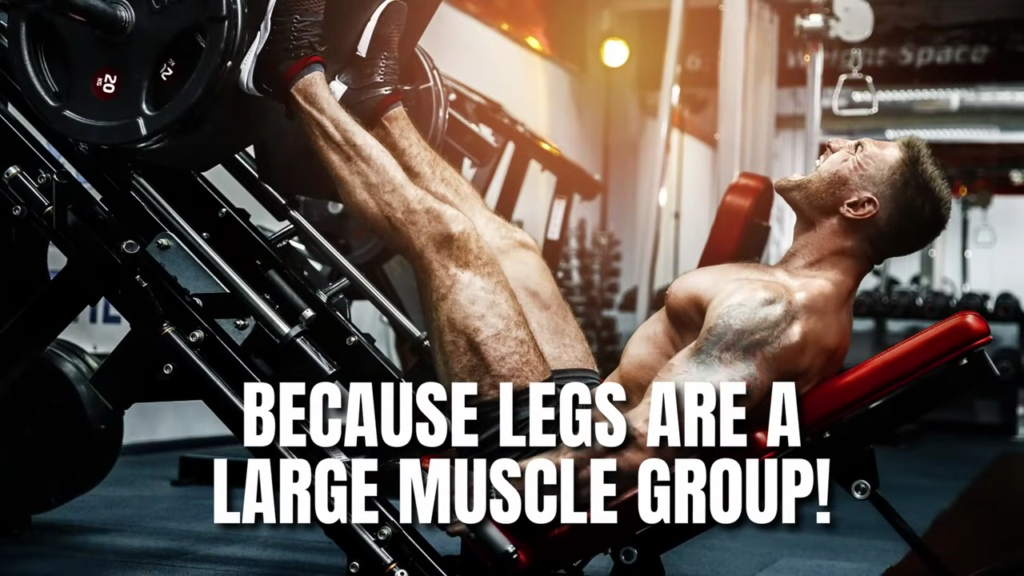
And the main reason why so many men, especially up here in the colder climates, tend to never train their legs is because it’s so hard. And when I lay out for you the techniques behind Naturally Intense High Intensity Training leg workouts, you’ll understand exactly why they’re hard. But most importantly, you’ll also understand why they work so well.

Increase Leg Gains by Increasing Intensity with this Tip
So Naturally Intense High Intensity Training is very different from most of the conventional high intensity training techniques that you may have heard of out there. And perhaps the most differentiating factor is the time frame. 10 to 15 minutes for a full leg workout.

And you may be asking yourself, “How is it even possible training legs such a short period of time?” And the answer is that there is zero rest between sets and zero rest between exercises.

That’s right. We go nonstop, all out. By reducing the time in between the sets, it organically
increases the intensity of the workout, with every single set becoming harder and harder as you go.
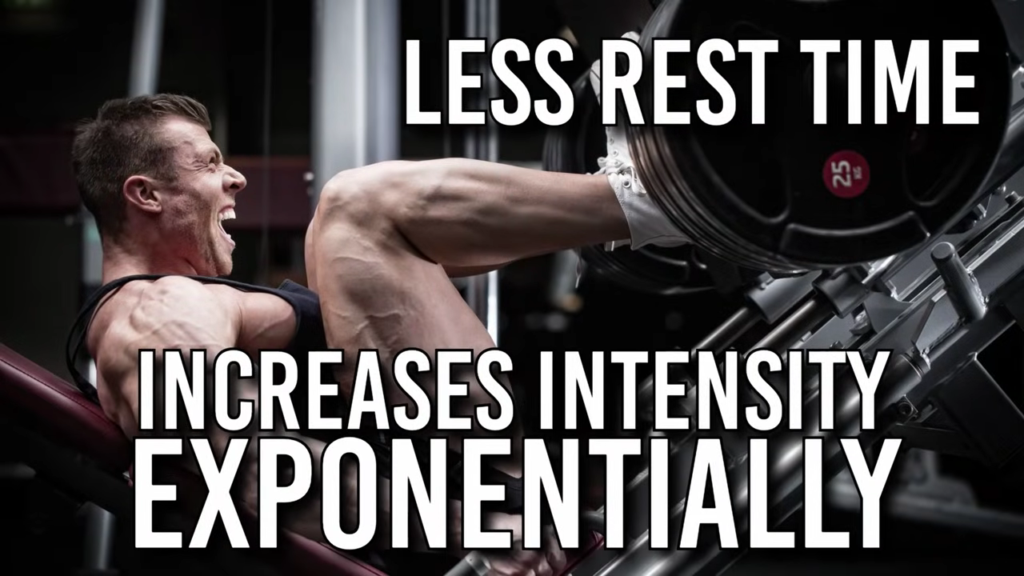
Changing Leg Exercises Each Workout VS Progressive Resistance
And one other extremely differentiating factor between Naturally Intense High Intensity Training and other forms of training is the fact when you’re doing a leg workout or any workout, every single workout is going to be different.

That’s right. Every single workout is different. Different in terms of both exercise selection and exercise execution. As we not only change the exercises every single workout, we also change the manner in which we do the exercises. In that we employ every single possible high intensity training technique to make the workouts as challenging as possible.
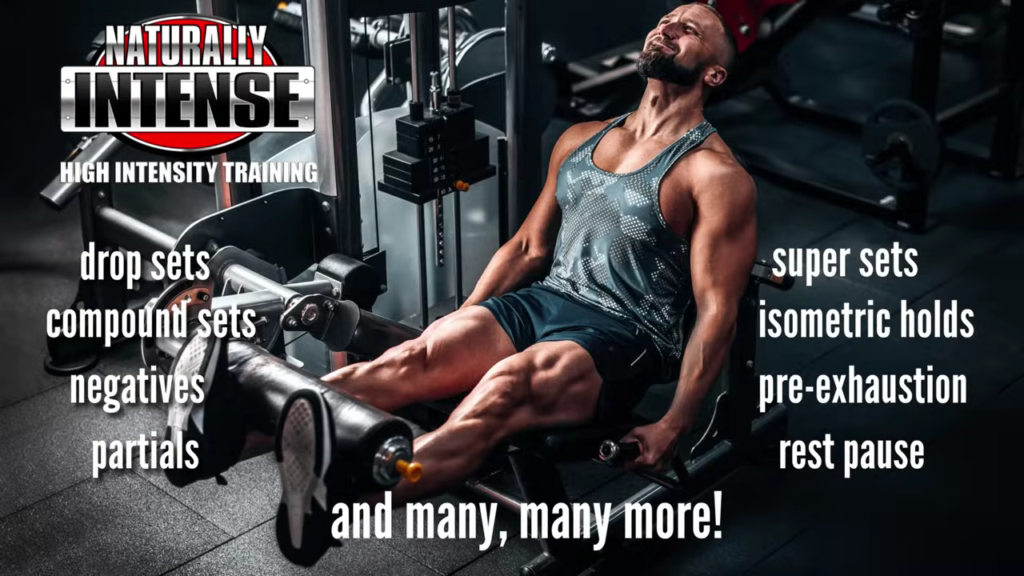
And right there you may think to yourself, “Well, how does that work if there’s no progressive overload if you’re not doing the same exercises over and over, trying to increase the weight to see your progress?” And here’s the thing, and it’s basic biology: Muscles get bigger and stronger when they’re exposed to some form of stimulation that they’re unaccustomed to that brings about overload. And once those criteria are met, it initiates the adaptive response that makes our muscles bigger and stronger.
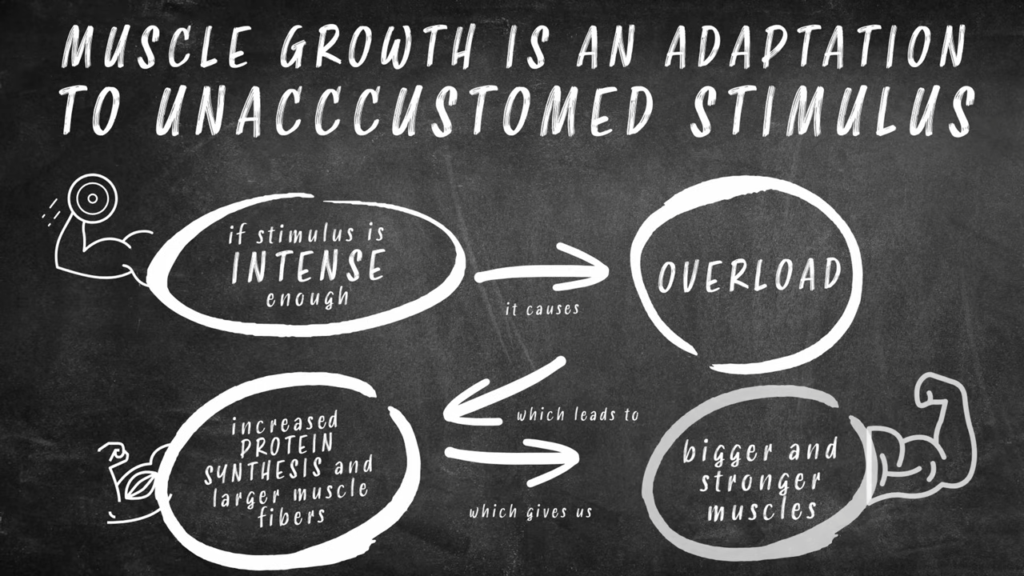
And the problem with progressive overload is the fact that it’s only in the beginning phases of doing that particular type of training are your muscles going to be exposed to any type of stimulation that it’s unaccustomed to. For example, if you’re doing a squat and you start off doing 135 pounds and you do your best to keep on adding more and more weight, if you’re just starting the training, that 135 pounds for even 12 reps will be an unaccustomed stimulus that will make your muscles bigger and stronger. And many of you out there can remember when you first started training those fantastic gains you saw.
But here’s the problem: If you keep on doing squats week after week, that 135 pounds for 12 reps is no longer going to represent an unaccustomed stimulation to your muscles, and they’re no longer going to get bigger and stronger from doing that particular weight because they would’ve adapted.
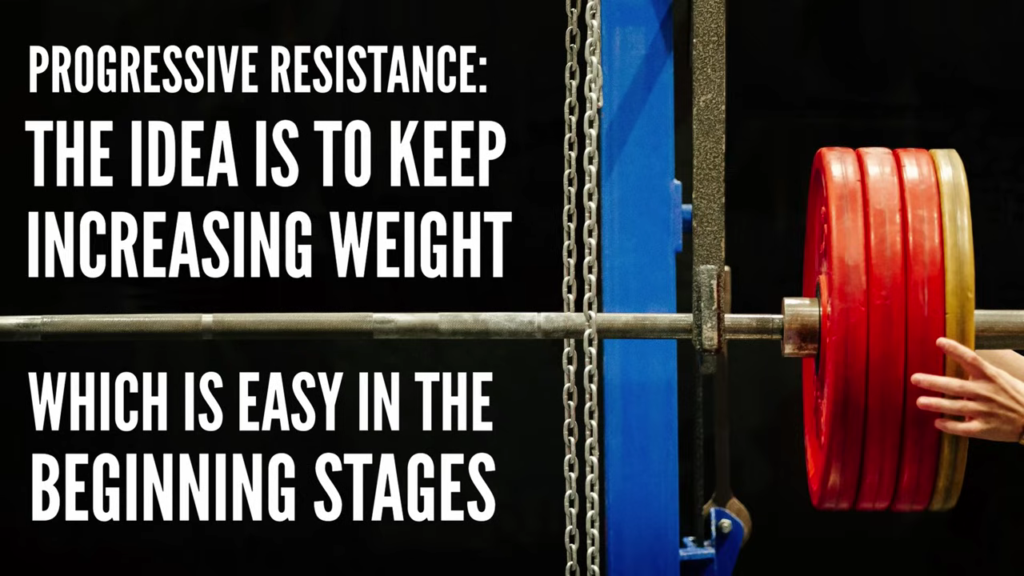
And the idea behind progressive resistance is to keep on adding weight, which you will be able to do when you’re first starting off. Because as you’re first starting off, like we said before, you’re seeing tremendous gains not just in muscle size but also in muscle strength. And of course your body’s adapting also neurologically to be able to perform the exercise more efficiently. That’s going to allow you to put more weight on the bar. And as you put more weight on the bar, that increased weight is going to represent an unaccustomed stimulation that can make your muscles bigger and stronger.
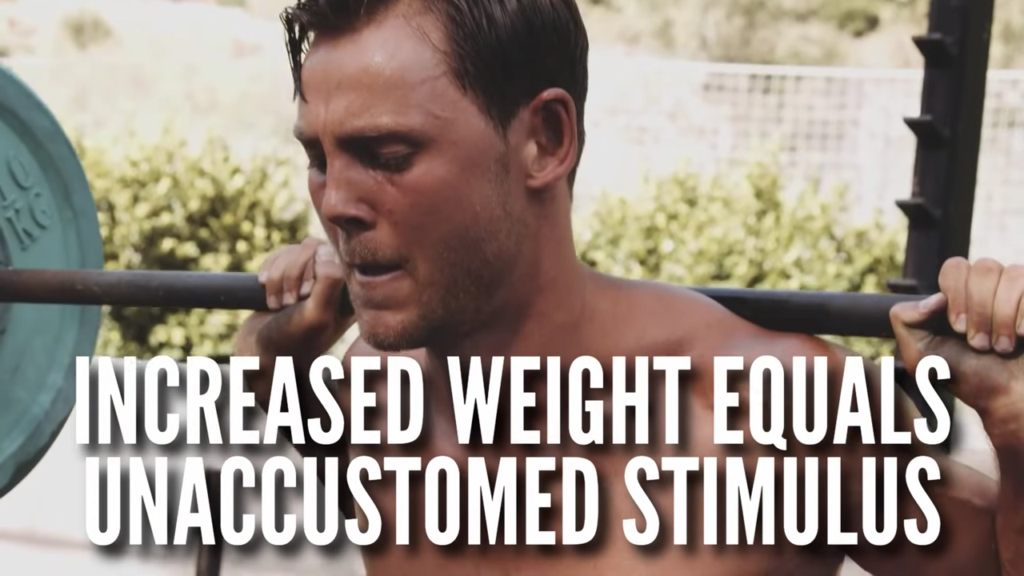
But here is the problem, and it’s a problem that every single one of you out there who’s ever done any kind of weight training understands completely! Over the course of one to two years, you’re going to get to a place where you cannot add any more weight. And over time, you’re going to hit a plateau.
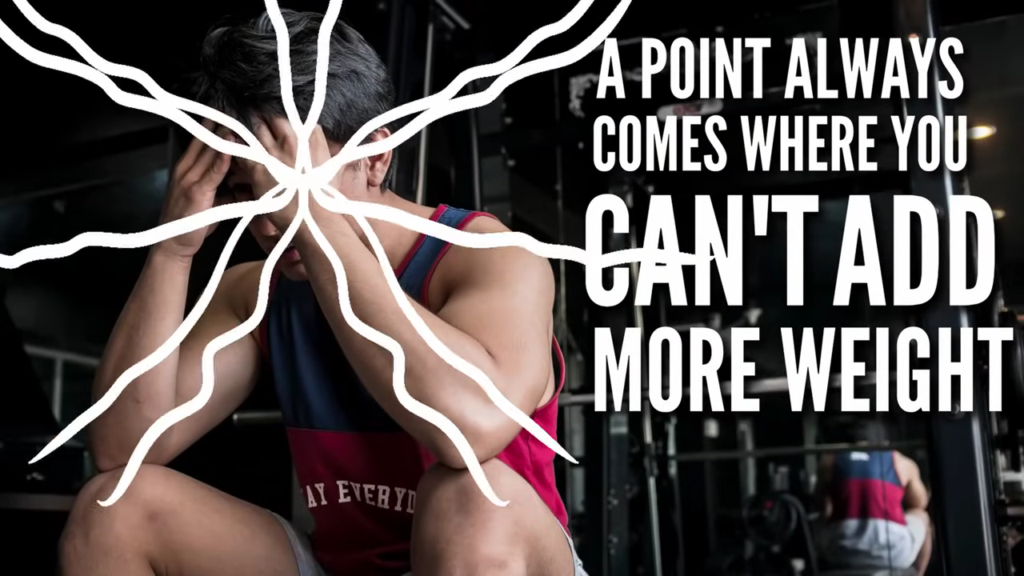
As you’re squatting with weight that’s determined pretty much by your genetics, and for most people, that weight isn’t going to be heavy enough to create the stimulation to build a truly elite natural bodybuilding physique.
The Best Leg Workout for Naturals to Avoid Plateaus
Now with Naturally Intense High Intensity Training, we circumvent all of that in that every
single time you’re doing any leg exercise, it’s always going to be performed differently and very often taken to the point of momentary muscular failure.

In truth, you should always be in the criteria of unaccustomed stimulation to your muscles every single time you train, which consistently allows you to keep on getting bigger and stronger over time without plateaus.
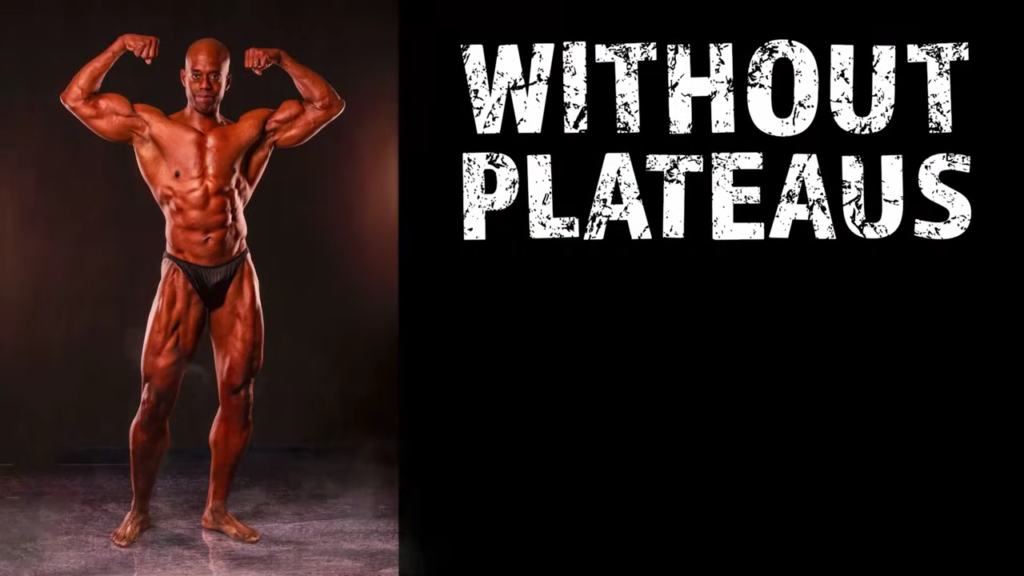
And as a result, for example, even when you’re not squatting every single week, in fact, I probably only squat maybe four or five times a year, if done correctly, when you do go behind that bar for straight sets, you’re going to be amazed as to how much more you’re able to lift. And also importantly, you’re able to do it without any injuries whatsoever.

At 50 years old, I can still squat five plates on each side because my knees don’t hurt. And my knees don’t hurt because I don’t have any overuse injuries. Bear in mind, overuse injuries happen if you keep on doing the same exercise and same movement over and over, which is essentially the hallmark of progressive resistance. And it’s a reason why so many people out there have been sidelined over the years and not able to enjoy really impressive leg development because they get to a point where they’re also slowed down by knee injuries.
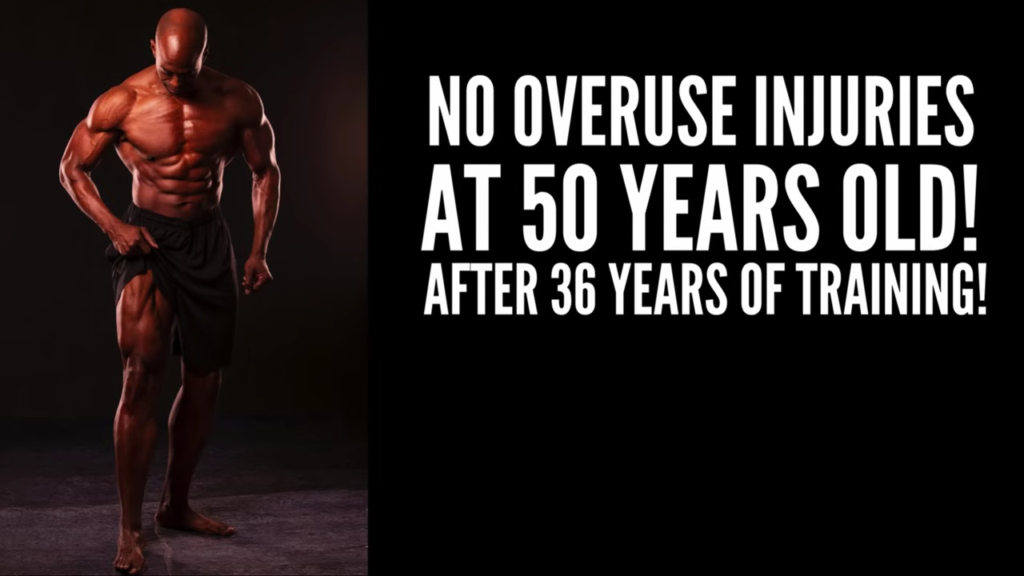
How High Intensity Training Prevents Knee Injuries
When it comes to longevity and avoiding injury, variety is key. And bear in mind that results as a natural athlete take a long time, and so you need to be vested with a training program that’s going to be sustainable. And bear in mind as well that the amount of time you spend training also increases your likelihood of overuse injuries. And the fact that I train a maximum of an hour per week is nothing compared to the hour to hour and a half per day that most people do for five, sometimes even six days per week.
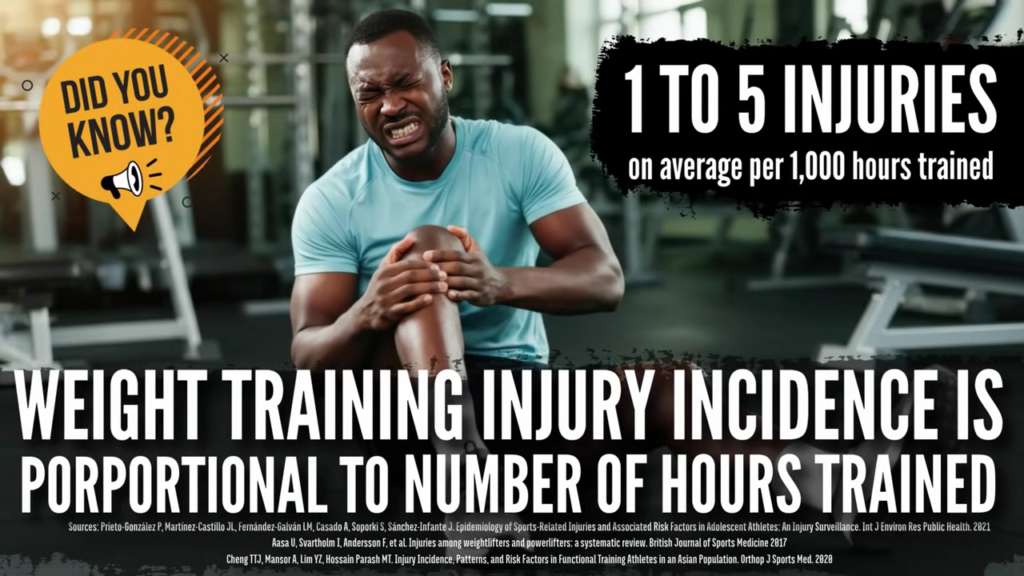
The Importance of Recovery Time for Optimal Leg Development
Which feeds right into the importance of recovery time in that with this form of training,
maximum results are always obtained if you train your legs once per week. That’s right. Once per week. It doesn’t matter if you have weak legs, it doesn’t matter if you think that you need to train more to get better results, that linear way of thinking simply does not hold up.
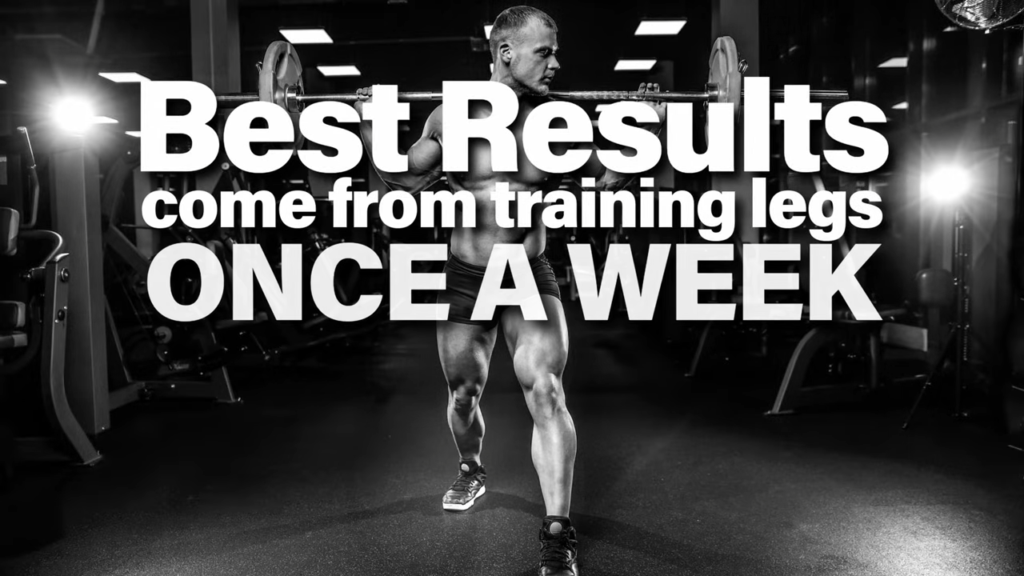
Over the years, I’ve had many men and women, all of them natural bodybuilders, who would, completely against my advice, train their legs again to make sure they’re always training their legs twice per week in the idea that if they train their legs more, they’d get better results. And that was absolutely contrary to what we found.
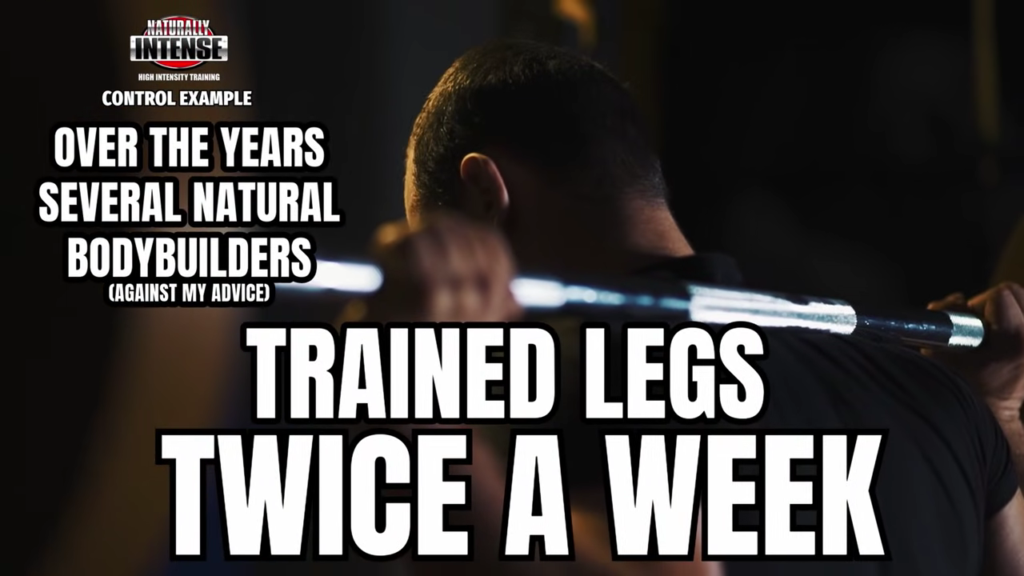
In fact, individuals who trained their legs more than once per week with this particular form of training always had significantly fewer results than those who were training once per week. Because, bear in mind, muscles do not get bigger and stronger when you’re training. They get bigger and stronger while you’re at rest.
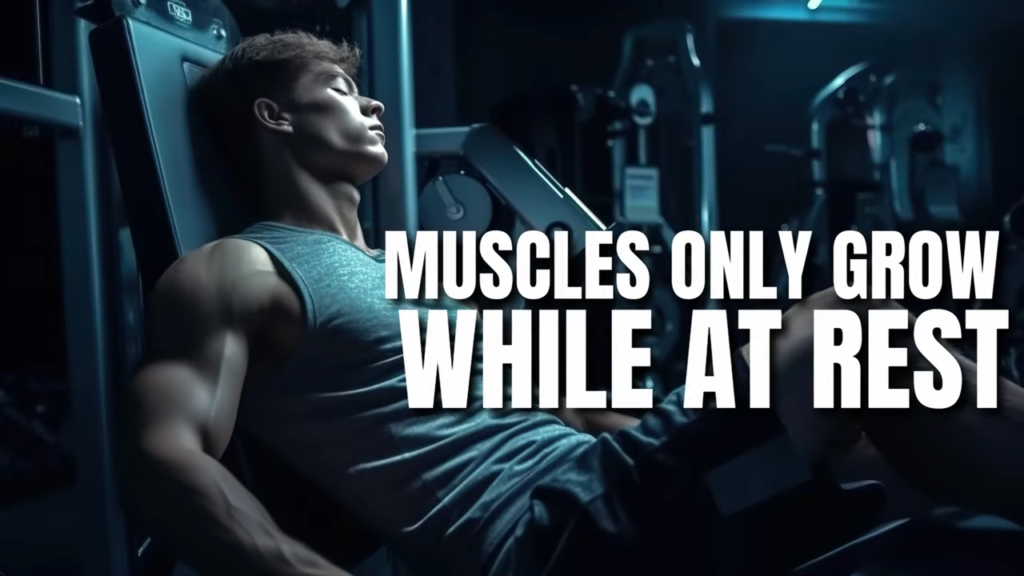
And now let’s get into the actual exercise selection to grow those legs.
Best Hamstring Training Principles for Natural Athletes
First off, I always start with hamstrings. Hamstrings tend to be the most undeveloped part of our legs, and the problem is that most people, when they train, they’ll do hamstrings last. And training nonstop with this type of intensity, most have difficulty training really a whole lot at the end of a very difficult quad workout. And so we always prioritize and make sure we do hamstrings first, which for beginners or intermediates will be one dedicated hamstring exercise of about three to four sets.

With that last set really going all out. But like I said, every single workout is different. So it may be that sometimes they go all out with two of those sets. And while the workouts are always different, the one thing that unites them is the intensity, as that’s the only real concept.
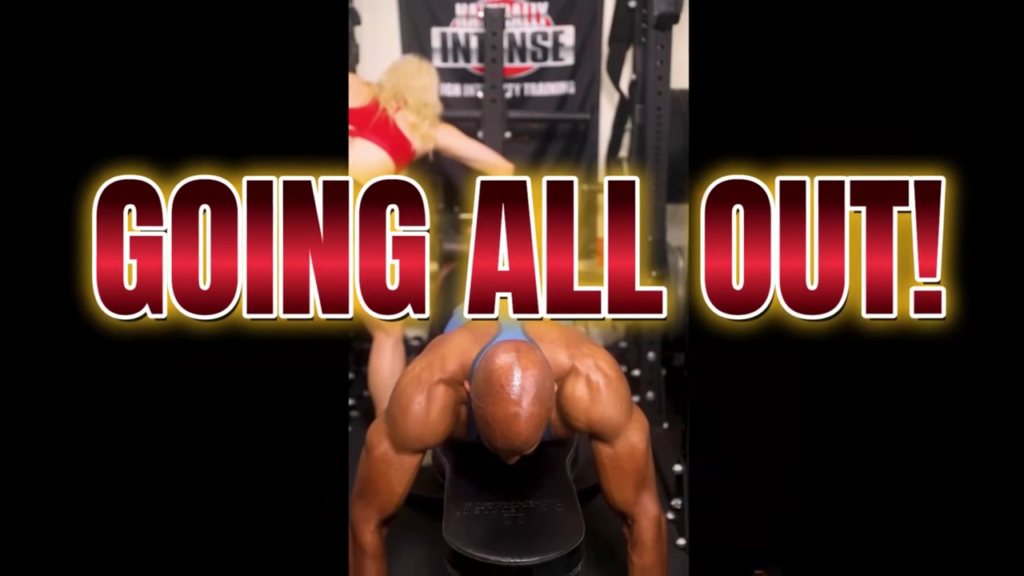
Everything else can and should change every single workout to make it such that you’re always stimulating the adaptive response.

Best Quadriceps Training Principles for Natural Bodybuilders
Next up is quads, and it’s really simple. It’s going to be one isolation exercise for three sets and one compound exercise for about three sets, going all out to failure on the last set. But not always. Like I said before, because every single workout is different, it can be a giant set of leg press extensions, or it can be a superset with leg presses and hamstring curls, all the while employing every single high-intensity technique possible.

Plyometrics for Bigger Quads, Hamstrings, & Glutes
And one of the other things that tends to make Naturally Intense High-Intensity Training stand out from other forms of training, especially when it comes to leg training, is the fact that we heavily employ plyometrics. You need only take a look at the legs of sprinters, high jumpers, gymnasts, and other athletes whose sports involve explosive movements to see that they all have one thing in common: exceptionally well-built legs.

Now here’s the thing about plyometrics. When I was a kid, like I said, my legs were painfully thin, and I started doing Ninjutsu. And in Ninjutsu, there’s a whole set of techniques called Tobijutsu, which are jumping techniques. And I saw my skinny legs getting bigger and bigger from doing these explosive exercises. And so when I started doing Naturally Intense High Intensity Training, I made sure that plyometrics was a major component of the training system.
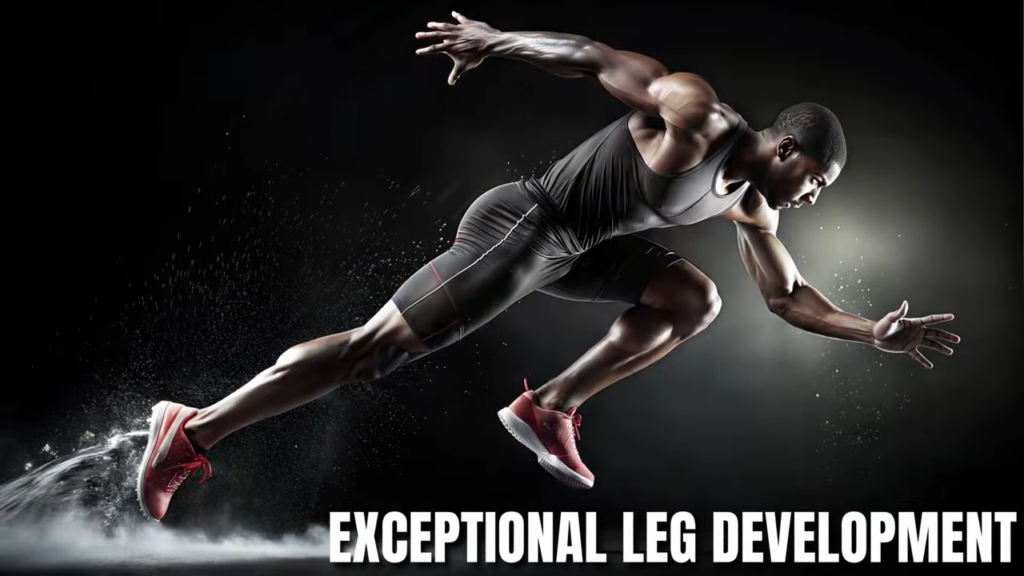
And it’s worked phenomenally well over the years.
But bear in mind, when you’re doing plyometric movements for your legs, and we do every
plyometric movement possible for leg training, it also ups the intensity, and you really have to push to keep on going. And it’s something about it because your quads get bigger, your
hamstrings get bigger, and your glutes get bigger as well. In fact, I’ve had a lot of clients over the years, especially those on the taller side, who thought they would never be able to get really well-developed legs, and they were able to do so. And I do credit the heavy plyometric aspect of this particular form of training with helping people really build impressive leg muscle.
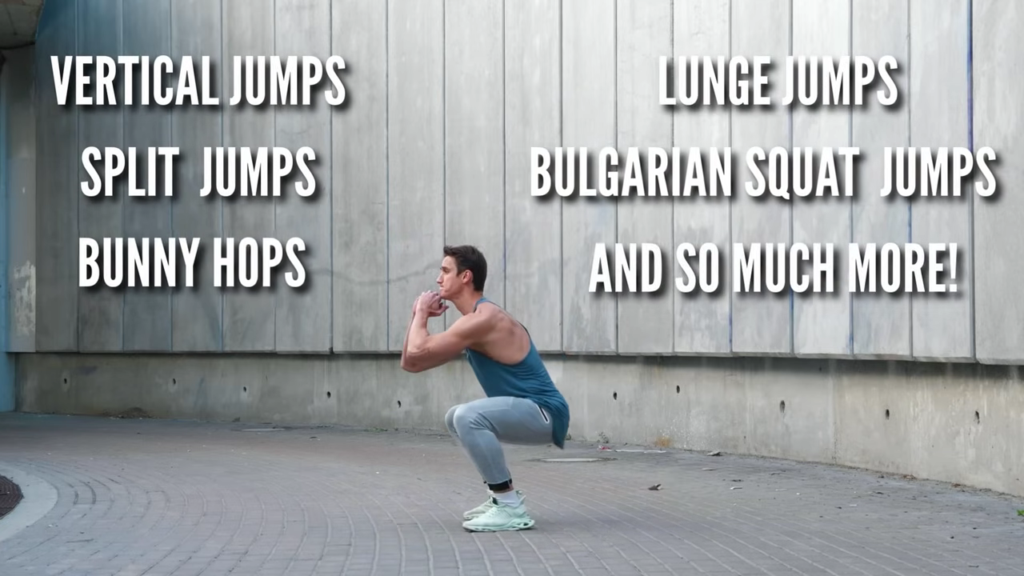
In fact, plyometrics give you the most bang for your buck, which is why every time I was on a CBS News program, I always showed a plyometric exercise as an example of Naturally Intense High Intensity Training. But again, as hard as it is, the reason why I’ve been training this way for all these years, and why my clients keep wanting to train this way, is because of the results.
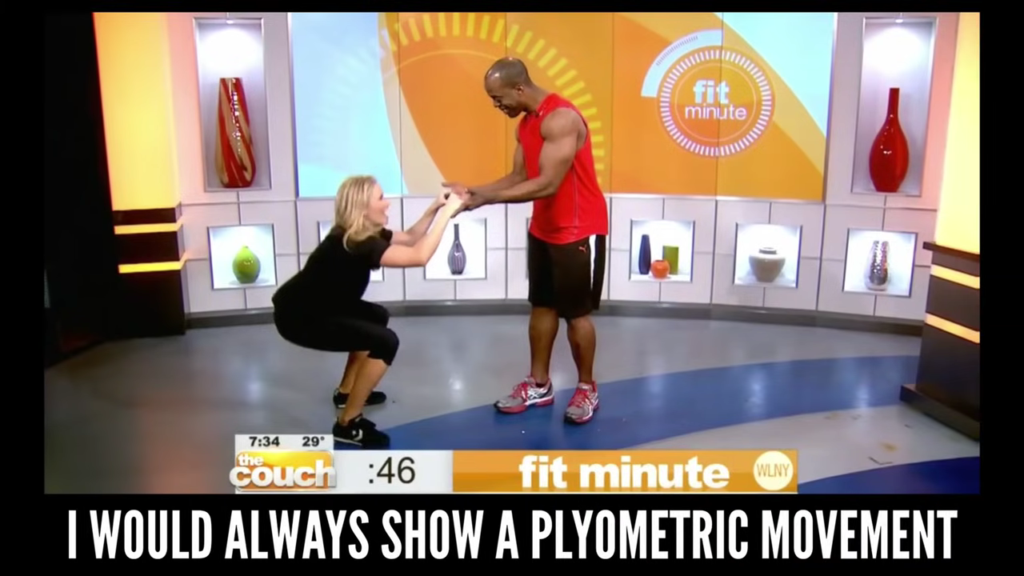
High Intensity Calf Training for Maximum Development
Last off, we’re going to end with calves. And we’re going to do one calf exercise and vary that every single time we train. Over the years, I found that what works best for growing my calf muscles was training as heavy as possible for as many reps as possible, minimum 20 reps, and sometimes even as high as 100 reps, going all out, really punishing those calf muscles to make them grow.
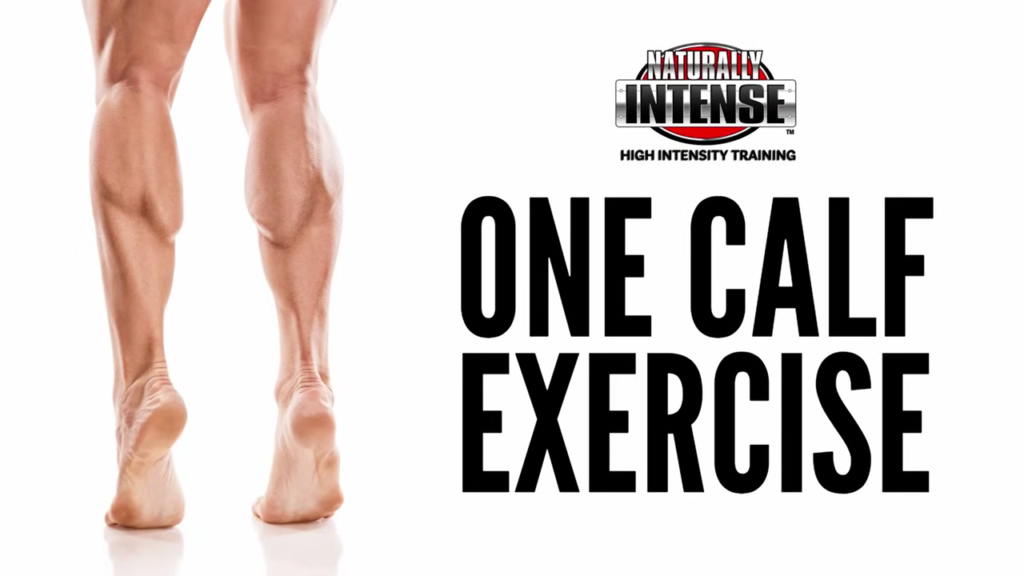
Sometimes we do three sets, but very often we’ll do giant sets, one really all-out set, as that seems to bring about optimal growth for those who are beginner to intermediate.
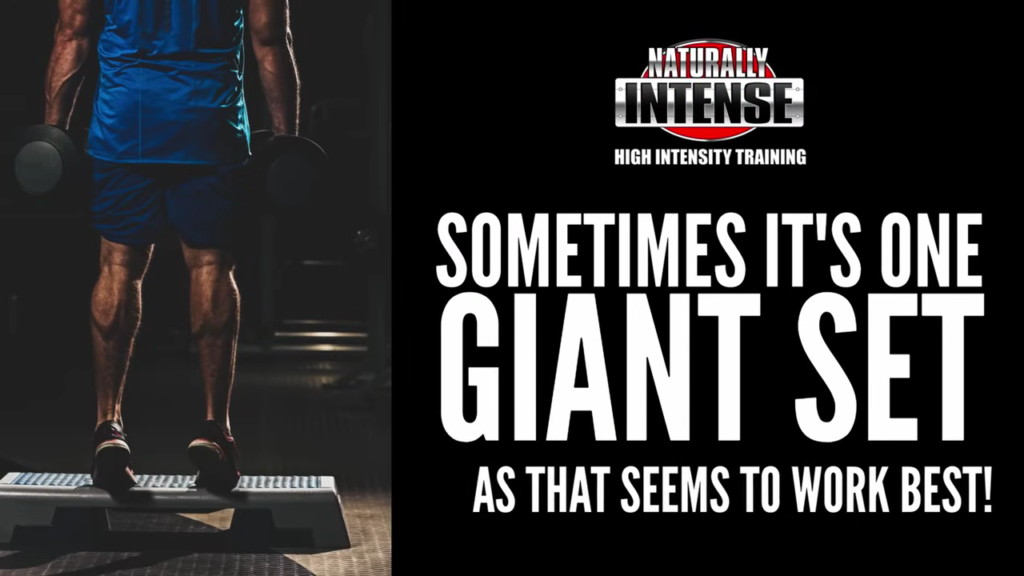
Now, bear in mind when I say, “Beginners, intermediates,” an intermediate for me is an elite athlete or a competing natural bodybuilder. I may at times do an extra leg exercise here or there in my leg workout, but again, bear in mind, I’ve been doing this now for the past 33 years, and the degree of conditioning that I have isn’t something that you’re going to get unless you’ve been doing it for a very long time.
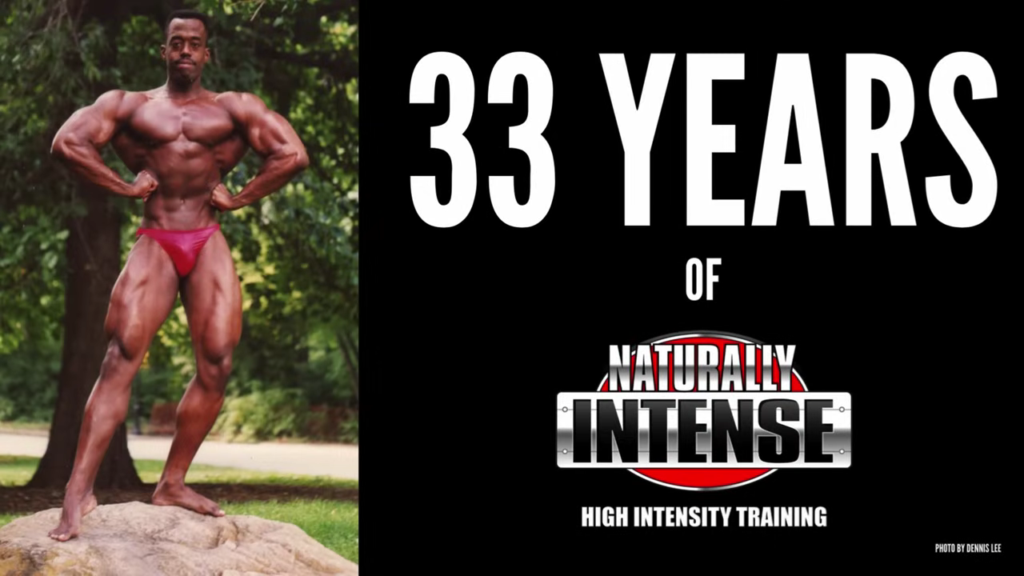
I’ve always lived my life with a principle: To whom much is given, much is expected. And so I try to share as much as I have learned because I remember when I was younger starting off, how difficult it was to get information from truly natural sources. I hope that my experience can help you on your natural path toward excellence.

Now, very important! Now that you’ve seen this video, make sure you watch this video. It talks a little bit more about the plyometrics we employ with Naturally Intense High Intensity Training.
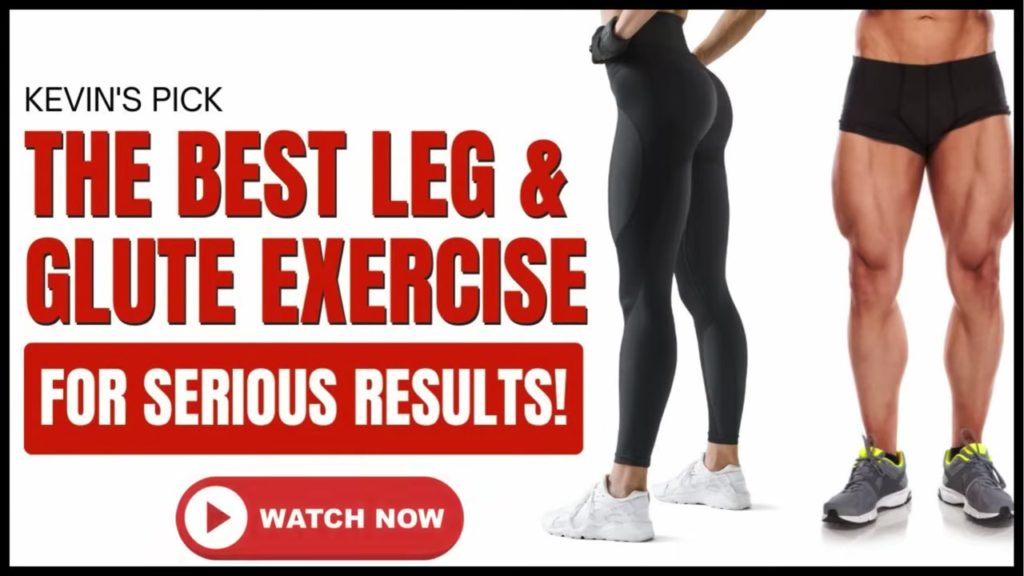
And also, I have a bonus for you in that you can download right here in the comments section a full account of me going through one of my truly intense leg sessions. It’s been published in a couple of natural bodybuilding magazines over the years, and I’m presenting it here as a gift from me to you.
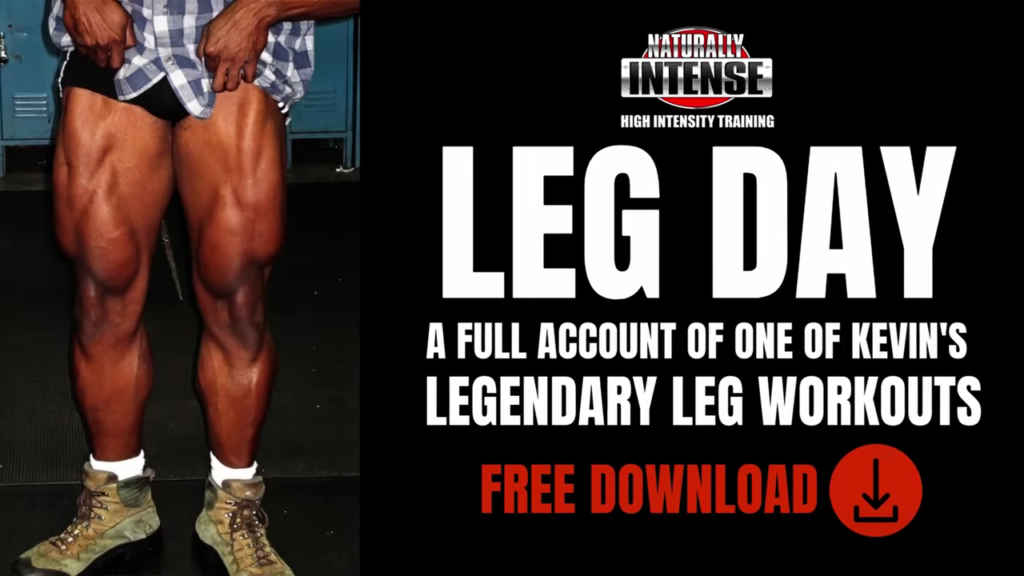
So thanks for tuning in. Know that I believe in you. And as always, Excelsior



